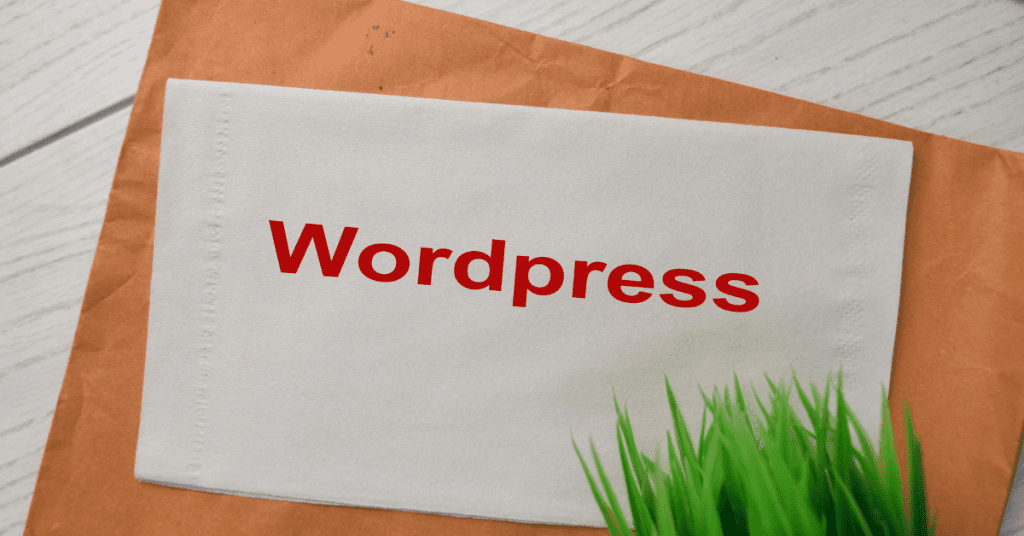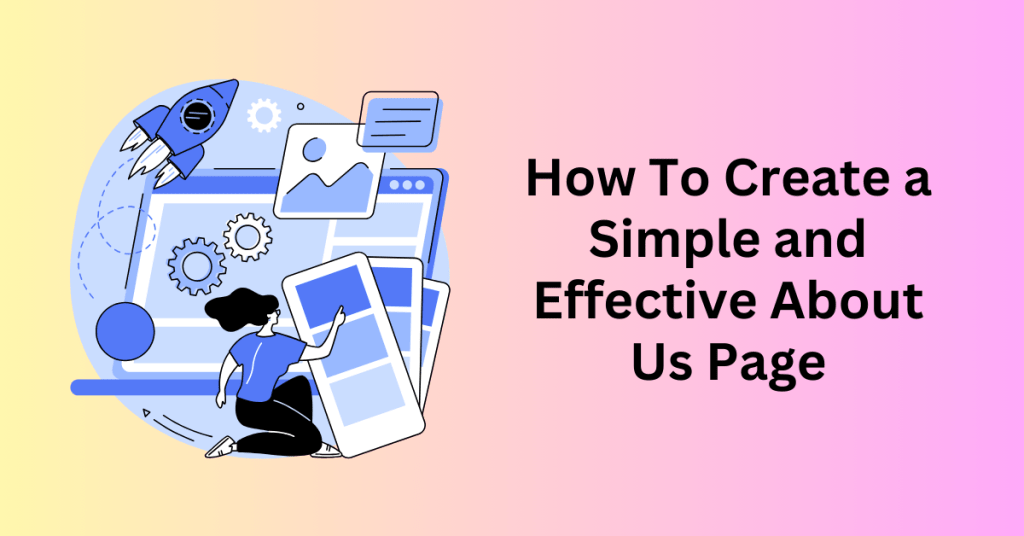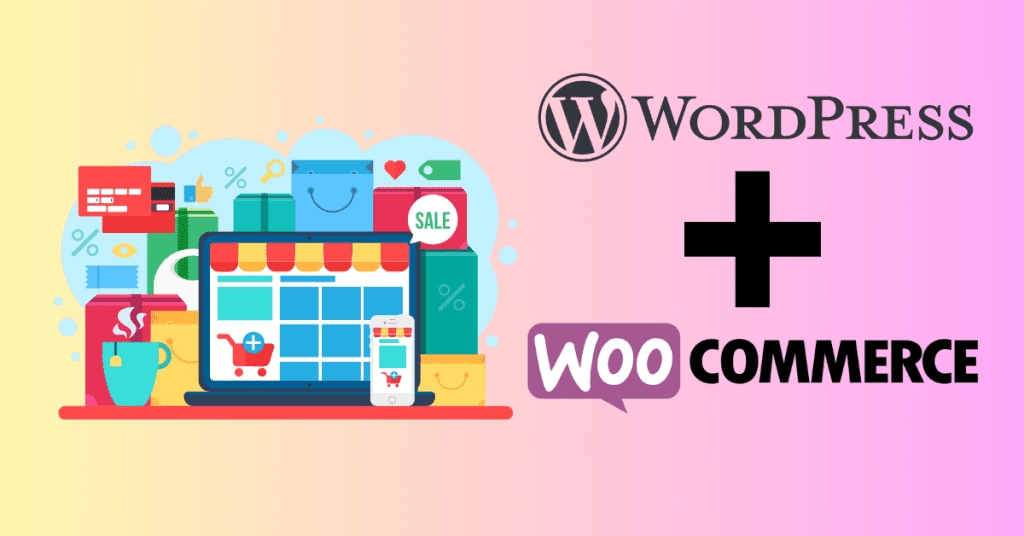A website is important for your business’s online presence. It’s the digital asset that you build to showcase your business or personal portfolio to show your work and connect with your community. If it’s your first website or your first time building a website, the most asked question will be “How long does it take to build a website?”
This comprehensive guide seeks to answer that query by breaking down the phases of website construction and examining key factors that can influence the timeline. Moreover, actionable tips will be provided to assist in expediting the overall process.
The journey of building a website encompasses various stages, each demanding attention to detail and thoughtful planning. Understanding the intricacies of these stages is paramount to managing expectations and ensuring a successful outcome.
Additionally, by delving into the factors that impact the timeline, you can make informed decisions and implement strategies to optimize efficiency. Whether you’re a business owner, a creative professional, or an individual with a passion project, this guide aims to explain everything you need to know before starting to build your website.
Website Building Basics
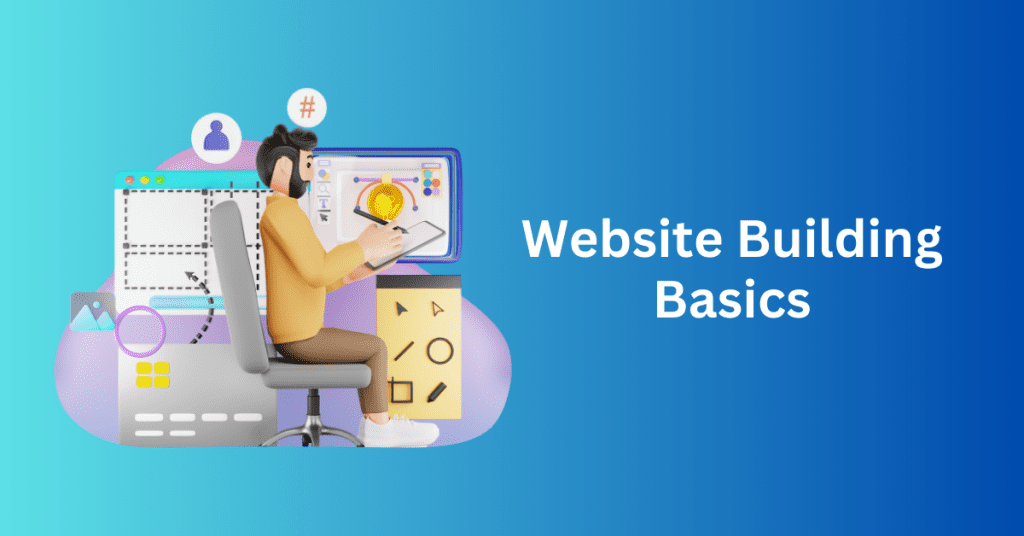
Building a website involves multiple steps. These include planning, research, competitive analysis, domain registration, web hosting, design, content creation, development, testing and launch.
Here’s an in-depth look at each of these steps.
1. Planning in Website Building
Planning to build a website is a crucial phase that sets the foundation for a successful and effective online presence. A well-thought-out plan ensures that your website meets its intended goals, engages the target audience, and functions smoothly. The planning process involves several key steps.
Define the Purpose and Goals
Firstly, defining the purpose and goals of the website is essential. Clearly articulate the objectives you aim to achieve through the website, whether it’s to provide information, sell products, generate leads, or foster community engagement. Understanding the purpose will guide the entire development process.
Target Audience
Next, identify your target audience. Define the demographics, preferences, and behaviours of your intended users. This information is vital for designing a user-friendly interface and creating content that resonates with the audience. Conducting market research or user surveys can help gather valuable insights.
Sitemap & Wireframes
Once the goals and target audience are established, create a comprehensive sitemap and wireframes. A sitemap outlines the structure and hierarchy of your website’s pages, while wireframes visually represent the page layouts and functionality. This step helps in organizing content and navigation, ensuring a seamless user experience.
Web Building Platform
Choose a suitable technology stack for your website based on its requirements. Consider factors such as the type of content you’ll be managing, expected traffic volume, and scalability. The selection of a Content Management System (CMS), programming languages, and other tools is crucial for the website’s performance and maintenance.
As part of the planning process, think about the functionality and features your website needs. Determine whether you’ll require e-commerce capabilities, forms, social media integration, or other specific functionalities. This will influence the development phase and ensure that the website meets your business needs.
Timeline & Budget
Lastly, create a timeline and budget for the website development project. Establish milestones and deadlines for each phase of development to keep the project on track. A realistic budget ensures that you allocate resources appropriately and prioritize essential features.
2. Research and Competitive Analysis in Website Building
Conducting thorough research and competitive analysis is a crucial step in the website-building process. It provides valuable insights that inform decisions throughout the development and marketing stages.
Here’s a breakdown of how to approach research and competitive analysis for website building:
Firstly, you can start by exploring your competitors’ websites to understand the landscape in your industry. Analyze their strengths and weaknesses, noting elements such as design, content strategy, user experience, and features. This competitive analysis provides benchmarks for your website and helps identify opportunities for differentiation.
Then, perform keyword research to identify the terms and phrases relevant to your business. This is crucial for search engine optimization (SEO) and content strategy. Identify high-ranking keywords that can drive organic traffic to your website and integrate them strategically into your content.
In addition, you may evaluate the performance of competitor websites in search engine results. Identify the keywords they are targeting and assess their SEO strategies. This information can guide your own SEO efforts, helping you optimize your website for search engines and improve its visibility online.
Besides, you need to consider the user experience (UX) of competitor websites. Analyze the navigation, layout, and overall usability. Pay attention to any positive or negative aspects mentioned in user reviews. Then, use this information to enhance the UX of your own website, making it more intuitive and user-friendly.
Finally, compile your research findings into a comprehensive report that serves as a reference throughout the website-building process. Use this report to inform decisions regarding design, content strategy, functionality, and marketing strategies. You should revisit and update your research regularly to stay informed about evolving industry trends and changes in the competitive landscape.
3. Domain registration and hosting subscription in Website Building
This is an important step as you want to choose and register a domain name that is memorable and relevant to your brand. Don’t try to look smart with something hard to spell. This will make it hard for your target audience to key in their search bar to access your website.

Once you have decided the domain name you want, you need to then secure it. You can either get it from the domain registrar like Namecheap or get it together with your hosting plan.
Hosting here means a place on a server to store your website’s files and data for your customers to visit. Some reputable web hosting companies like Bluehost do offer excellent service, uptime, fast loading speeds, optimized hosting plans for WordPress, free SSL, free 1-year domain name and more.
4. Design in Website Building
The design phase is a crucial step where your website begins to take visual form. During this stage, you’ll be making key decisions on design elements that will define the appearance and user experience of your website.

Create Wireframes:
Firstly, you start by developing wireframes, which are basic blueprints outlining the structure of each page. These wireframes map out the placement of essential elements such as menus, content areas, and call-to-action (CTA) buttons. This step provides a foundational framework for your website’s layout.
Decide on Color Scheme, Typography, and Branding:
Then, choose a cohesive colour scheme, typography, and overall branding that aligns with your brand identity and resonates with your target audience. Consistent and visually appealing design elements contribute to a cohesive and memorable user experience.
Develop Mockups:
Finally, proceed to create detailed mockups, which serve as comprehensive representations of the final product. Mockups incorporate all relevant design elements, including colour, typography, and graphics. Tools such as Adobe Illustrator and Canva can assist in developing these visual representations, allowing you to visualize the overall look and feel of your website.
By diligently progressing through the design phase, you lay the foundation for a visually appealing and user-friendly website that effectively communicates your brand and engages your audience.
5. Content Creation in Website Building
As you progress in building your website, it’s time to focus on creating the content that will be featured on your site’s main pages, such as the Home, About, and Contact pages. Planning and preparing this content in advance contributes to a smoother and more efficient website launch. This can ensure your site is fully operational and engaging for visitors from the moment it goes live.
Consider the following popular website content formats:
Blog Posts:
Regularly publishing blog posts can help establish your website as a valuable resource in your niche. Share insights, tips, and relevant information to attract and retain your audience.
Videos:
Videos are a highly engaging content format. People spend twice as much time on a webpage that includes videos. So, incorporate video content to enhance engagement and boost your SEO efforts.
Images:
Visual elements, such as images, play a crucial role in enhancing the overall aesthetics of your website. Use high-quality images that align with your brand and visually communicate your message.
Podcasts:
If your target audience enjoys audio content, consider creating podcasts. Podcasts are a convenient and accessible way to share information, interviews, or discussions with your audience.
Other Downloadables:
Offer downloadable resources, such as eBooks, guides, or templates, to provide additional value to your audience and encourage engagement.
You should research to determine the most optimal content strategy for your website, taking into account your target audience’s preferences. By preparing diverse and engaging content, you can cater to different user preferences and create a more dynamic and appealing online presence.
6. Development in Website Building
The development phase marks the transformation of your website from a conceptual design into a tangible, functioning entity. During this stage, you or your developer will construct your website based on the mockups created earlier in the design phase.
In the past, the development phase typically involved coding webpages from scratch. However, with the advent of website builders and Content Management Systems (CMSes) like WordPress, Wix and ClickFunnels, coding is no longer mandatory. While manual coding or custom development remains an option for those with specific requirements, website builders provide a more accessible and efficient alternative.
The development phase concludes with the creation of a fully operational website, poised to be populated with the content prepared earlier. This phase represents the bridge between design and functionality, bringing your envisioned website to life and laying the groundwork for a seamless user experience.
7. Testing in Website Building
The testing phase is crucial to ensure the smooth functionality of your website. Before launching your site, it’s essential to conduct thorough testing to identify and fix any bugs or issues. This includes checking how well your website performs on various browsers and devices, ensuring compatibility and a consistent user experience.
Key aspects to address during the testing phase:
Cross-Browser and Device Compatibility:
Test your website on different browsers (such as Chrome, Firefox, Safari, and Edge) and various devices (desktops, laptops, tablets, and smartphones). Verify that your website displays correctly and functions seamlessly across these platforms.
Link and Functionality Verification:
Double-check all links and functionalities on your website to confirm that visitors can navigate through the site without encountering technical problems. You must ensure that forms, buttons, and interactive elements work as intended.
User Experience Testing:
Assess the overall user experience by navigating through your website as a visitor would. Check for intuitive navigation, clear calls to action, and a user-friendly interface.
Page Load Speed:
Optimize the loading speed of your web pages. Slow-loading pages can lead to a poor user experience and may negatively impact your website’s search engine rankings.
Your visitors will not return to your website if they have a bad experience with it. Therefore, thorough testing before the website goes live is essential to ensure a positive user experience and encourage repeat visits.
8. Launch in Website Building
Once testing confirms that everything is in order, your website is prepared for launch. During this phase, configure your domain to point to your hosting server. After the initial launch, perform another round of testing to ensure that all components function as expected.
You can first gather feedback from beta testers regarding your website’s usability, functionality, and speed. This valuable input can help identify potential areas for improvement and refinement.
Then, employ security testing tools to identify any new threats or weaknesses in your website’s security. Addressing these issues promptly ensures the ongoing protection of your site and its users.
When you are done, based on the feedback received and the results of security testing, take corrective steps to enhance your website’s overall user experience. This may involve making adjustments to improve functionality, address usability concerns, or strengthen security measures.
By conducting thorough post-launch testing and actively seeking feedback, you can continuously optimize your website, providing users with a seamless and secure online experience.
9. Post-launch activities in Website Building
Launching your website is a significant milestone, but it marks the beginning of a new chapter rather than the end of the story. To ensure sustained success, it’s crucial to engage in post-launch activities that focus on creating brand awareness and maintaining high performance. These activities include:
Search Engine Optimization (SEO):
Optimize your recently launched website to rank higher on search engines, thereby enhancing its visibility to potential users.
Promotion:
Actively promote your website on various platforms, including social media and other online channels, to generate targeted traffic and increase your online presence.
Analytics:
Implement website analytics tools, such as Google Analytics, to track user behaviour. Leverage the insights gained to make data-driven decisions and better understand your audience.
Content Updates:
Consistently provide fresh and relevant content to your audience. Regular updates keep visitors engaged, demonstrate your commitment, and contribute to maintaining interest in your website.
Performance and Security Monitoring:
Continuously monitor your website’s performance and security. Stay vigilant for potential issues and make updates or enhancements as needed to ensure a smooth and secure user experience.
By actively participating in these post-launch activities, you not only strengthen your brand presence but also contribute to the ongoing success and effectiveness of your website. This proactive approach helps you adapt to evolving trends, meet user expectations, and maintain a high level of performance and security over time.
How long does it take to build a website?
Creating a website can vary in duration, ranging from a few hours to several weeks or even months. The timeline is influenced by various factors, such as the chosen website-building approach (whether you undertake it independently or enlist a web developer), as well as the complexity and content specifications of the website.
Here are some factors that can affect the timeline.
1. Website-building technique
There are multiple approaches you can adopt when it comes to constructing a website. Let’s explore each one.
Using Website Builders:
Website builders provide accessible tools and templates, enabling even beginners to create a basic website within a few hours. The downside is that creativity is somewhat restricted. While you can personalize available templates, your options are confined to what these templates offer. Website builders suit individuals and small businesses aiming to swiftly establish an online presence through a simple website.
There are different website builders out there like ClickFunnels, Wix, GetResponse and others. All with their strengths and weaknesses in their field.
Using WordPress:
Another method is to build a WordPress website with a hosting service like Bluehost. Currently, there are 1.13 billion websites globally, with 45.8% built on WordPress, making it the world’s most popular CMS.
Constructing a WordPress website strikes a balance between customizability, user-friendliness, and affordability. You get access to pre-made themes, plugins, and templates for designing your site. While this option demands more initial setup effort compared to website builders, it provides a more expansive creative space.
The time required for a fully functional WordPress site varies from a few days for a one-page website to a few weeks or months for a more intricate, feature-rich site.
Hiring a Developer or Web Design Agency:
Enlisting the services of a professional website developer or a web design agency results in a more tailored and sophisticated website. However, this route typically takes longer due to the customized nature of the work, which may involve coding the entire website from scratch.
The timeline for this option can span from six weeks to six months, contingent on the project’s requirements.
2. The complexity and scale of the website
If you aim to develop a simple website with just a few pages, this can be accomplished swiftly. For instance, crafting a small business website or a personal blog typically takes anywhere from a few hours to a week.
On the other hand, if you’re envisioning a multi-page website with complicated design elements or advanced functionalities like eCommerce capabilities and interactive features, the development process naturally extends. Building such websites may span several weeks to several months to ensure a comprehensive and well-executed result.
3. Content requirements
The timeline for website development can be significantly influenced by the quantity and nature of content that needs to be created or integrated. Crafting high-quality and engaging content for different pages is the most important for your website. This includes writing copy, capturing photos, designing graphics, and producing videos, all these require dedicated time and effort.
4. Design requirements
The choice between custom designs and pre-made templates plays an important role in determining the web development timeline. Custom designs, crafted specifically for your brand, will need more time for conceptualization, creation, and implementation due to their unique nature.
On the other hand, pre-made templates, while less distinctive, provide a quicker path to launching a website. This makes them well-suited for time-sensitive projects or those with fewer design specifications. These templates are tested and proven to work by the platforms before being published in their template library.
5. Development team size and expertise
The timeframe for building a website can also be influenced by the number of individuals involved in the project and their level of expertise. Naturally, if you are managing all aspects by yourself, the process may take longer, particularly if you are new to web development.
Conversely, a larger team with diverse expertise can concurrently address multiple aspects of the website, potentially minimizing the overall development time.
How To Speed Up The Web-Building Process Doing It Yourself
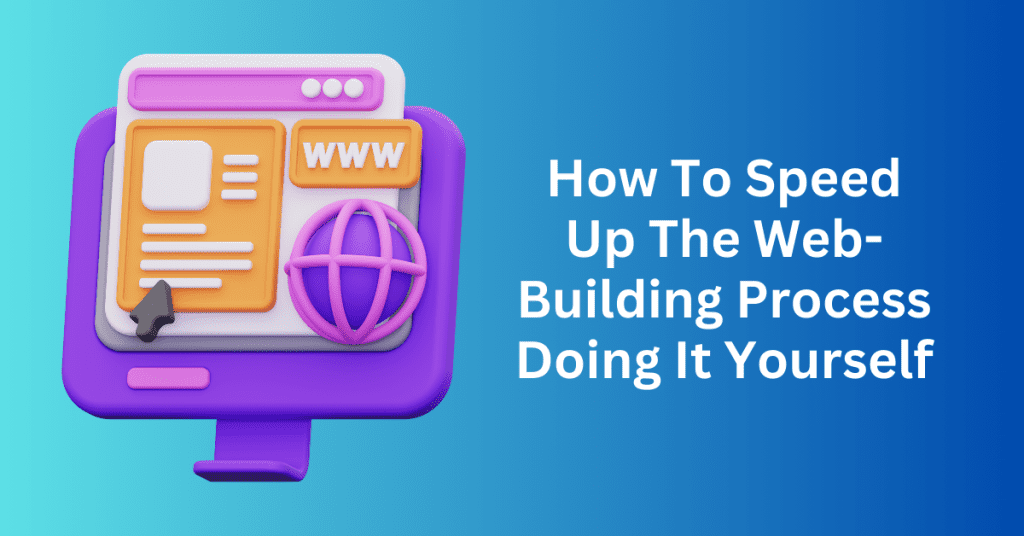
Speeding up the website-building process when doing it yourself involves adopting a systematic approach and leveraging the platform’s user-friendly features. The first step is to streamline the planning phase. Firstly, define the purpose and goals of your website clearly. Then, outline its structure, and identify key features.
WordPress provides a wide range of templates and themes to choose from, so having a clear vision upfront will help you make quicker decisions during the design phase.
Utilizing pre-built themes is another effective strategy for expediting the process. WordPress offers an extensive library of themes that cater to various industries and styles. By selecting a theme that aligns with your vision, you can significantly reduce the time spent on design customization.
Additionally, many themes come with built-in functionalities. This can eliminate the need for extensive coding or development work. It allows you to focus on content creation and fine-tuning the elements that matter most to your website.
Next, embrace the block editor in WordPress to enhance efficiency. With its drag-and-drop functionality, the block editor simplifies the process of creating and arranging content. You can quickly structure your pages, add multimedia elements, and customize layouts without delving into complex coding. The block editor empowers even those with minimal technical expertise to create visually appealing and well-organized websites.
Lastly, taking advantage of WordPress plugins can expedite the incorporation of advanced features. Rather than building complex functionalities from scratch, plugins offer ready-made solutions. Whether it’s adding a contact form, implementing SEO tools, or integrating social media, plugins can save time and effort.
However, it’s essential to choose reputable plugins, as too many or poorly coded ones can affect website performance. By strategically combining these approaches, individuals can efficiently build a WordPress website tailored to their needs, even with limited technical knowledge.
Final thoughts: How Long Does it Take for Website Building?
The duration required for website construction is contingent on factors such as size, complexity, design preferences, content needs, and the chosen web development method. However, as discussed in this guide, expediting the process is feasible through careful planning, the utilization of pre-made templates, and the simplification of design components.
Bluehost catalyzes streamlining the website development journey. Notably, each WordPress hosting plan provided by Bluehost incorporates WonderSuite, an AI-enhanced toolkit of web-building resources crafted to facilitate the swift establishment of your website.
Embarking on a Bluehost WordPress hosting plan is an avenue to materialize your digital aspirations efficiently. The inclusion of WonderSuite, with its innovative tools, not only accelerates the website creation process and enhances your capabilities to craft a distinctive and engaging online presence.
